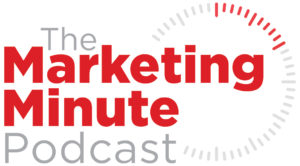
Whether you are in hospital distribution or medical sales, customer relationship management (CRM) is an essential strategy for any business in the healthcare supply chain. Building a customer base takes time, effort, planning, and effective execution. First, your company must educate prospects and attract them to your services. Then, you build engagement and develop customer loyalty through valuable messaging and superior service. This process is called CRM.
Consumer needs are constantly changing, especially in the healthcare industry. New research findings, government regulations, technological advancements, and new medications, all impact the decisions of healthcare consumers. For this reason, healthcare suppliers need a deep understanding of their prospects’ needs and concerns to effectively guide their campaign strategies and increase market share. This is why CRM for healthcare vendors is so important.
Benefits of CRM for Healthcare Vendors
CRM is essential to your manufacturing business development strategy because it provides invaluable insights to guide your marketing campaigns and the way you approach your prospects.
CRM allows you to:
- Analyze opportunities: You can assess the market and prioritize your efforts.
- Predict your audience: Based on behaviors, trends, and demographics, you can gauge which prospects are potential customers.
- Engage your users: You’ll know how and when to reach both current and potential customers to maximize their engagement and build customer loyalty.
- Prove your impact: CRM enables you to track your progress and share results with stakeholders.
CRM is critical in identifying your target audience, understanding what they want, and continuing to build a relationship with them in the future. CRM for healthcare vendors helps suppliers streamline their processes while nurturing leads, improving the quality of leads, and increasing conversion rates. All of these are essential to business success.
Where CRM benefits your organization the most is in aligning marketing and sales departments.
It does so by:
- Improving communication: Managers can track the success of each department’s approach and maintain open dialogue through shared records.
- Providing deeper insights: Shared results give both departments full access to lead contact information, including details like competitors, background, and brand interaction.
- Bridging gaps with shared goals: Sales and marketing work side-by-side in defining lead generation and nurturing strategies.
- Streamlining efforts: Both departments can see where each prospect is in their user journey. This allows marketing to create more effective messaging and sales to approach interested parties with more focus.
CRM creates opportunities for teamwork that help marketing and sales departments work together to generate quality leads and sales growth.
5 Ways Healthcare Vendors Can Excel at CRM
CRM is an effective way for healthcare vendors to target, nurture, and retain potential customers efficiently. Here are five ways healthcare vendors can excel at CRM.
1. Identify Your Target Audience
Healthcare suppliers can use CRM to pinpoint strong market opportunities and make educated decisions about where and how to allocate their marketing budget. Learn about your target audience by:
- Analyzing yearly trends: Compare data year-over-year to determine a customer’s average financial value and predict their future value.
- Assessing demographics: Look at quantitative and qualitative traits, from gender and age to professional background and user behavior. Identify patterns, healthcare needs, and general trends to develop a more in-depth understanding of your audience.
- Finding opportunities by location: CRM helps to determine ideal populations by geography given demand, need, digital engagement, and risk.
Once you have a better idea of who your target audience is, you can begin to develop campaigns tailored to meet their needs and increase the likelihood of converting them to customers.
2. Predict Highest Value Customers
CRM provides predictive models to discover prospective customers most interested in getting your messages. This allows you to locate, contact, and engage them more easily, which maximizes your marketing approach.
There are lots of CRM tools available, but you need to realize that not all systems are the same. Understand the predictive models provided by your program and gain an understanding of what they reveal about customers who could benefit from your services, how best to reach them, and how much revenue you can expect to make from each one.
3. Segment Your Audience
Once you have a better understanding of your target audience, you will want to categorize them into meaningful segments to tailor content that resonates with their needs. Personalized messaging that provides value to an audience is more likely to engage them and entice them to convert to a customer. When you group them into segments, you’re able to further define their needs by identifying personas that shape your custom messages.
Personas can be anything from medical needs or financial value to purchase behavior or job title. They should be specific enough to differentiate distinct identifiers among your target base. To track your efforts and measure your results, audience segments should be distinguishable in your CRM database.
4. Understand the Customer Journey
Enlist journey mapping to recognize opportunities throughout the customer journey where prospects can be encouraged to take action. When you have a deep understanding of the customer journey, you can develop effective messaging and track useful conversion metrics. Use your audience segmentation to strategize detailed customer points of entry, identify the conversions you’ll measure, and relate them to your marketing goals.
As you begin to gather campaign data, you can analyze the activity generated by each channel. This can help you see which touchpoints yield the most conversions. With this information, you can better see how the customer journey is impacting your overall ROI.
5. Assess Your Omnichannel Approach
An omnichannel approach allows you to expand your reach through various platforms. However, it can be difficult to track results to see how well your campaigns are performing. CRM provides dashboard capabilities to help you assess results by individual channels or across all channels.
This information lets you see which channels are performing well, and where there is room for improvement. You can track which pathways are driving conversions most effectively and set realistic goals to ensure you arere constantly improving your approach.
Trust the Experts to Help You with CRM
CRM plays a major role in the success of any healthcare business. Share Moving Media is a full-service content and media company that helps healthcare suppliers attract, reach, and retain prospective customers through effective marketing strategies.
Contact us today to learn more about CRM for healthcare vendors.



